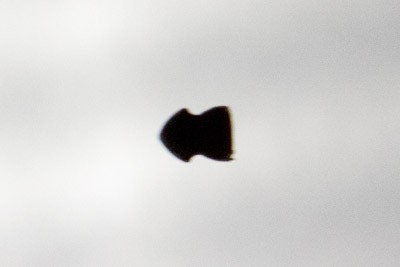Complete Description Website ~ Hackaday Post ~ DIY Photography Article ~ Hackster.io Post
What Is A High-Speed Flash?
A high-speed flash is a photography tool used for high-speed photography (unsurprisingly). Photographs of bullets and other projectiles travelling at incredible speeds can be photographed using any camera (even a cell phone) with the help of a flash.

A normal camera flash is not fast enough to capture these images! Below is a comparison of a typical camera flash vs this high-speed flash (1-μs duration). Both air rifle pellets were fired from the same rifle, travelling about 280 m/s. This demonstrates the advantage of using a high-speed flash for high-speed photography.


Anybody Can Do It
While typical camera flashes require a trigger system to fire, Edgerton is going to be equipped with a built-in tripwire trigger function. All you need is a camera, a projectile, and a piece of wire! The tripwire trigger works by placing a small wire strand in front of the projectile's path (usually in front of a rifle's barrel). The user enters a delay into Edgerton, and it will flash exactly that long after the projectile has broken the tripwire!
Edgerton can also use the same trigger system as a typical camera flash. This means it's compatible with DSLR's or wireless trigger systems.
Are There Alternatives?
High-speed photography is no recent invention. Doc Edgerton was already experimenting with high-speed photography in the 1940's, and has taken some incredible photos. He was known to use an Air-Gap Flash, which is similar to the Xenon flash tubes found in modern camera equipment. It unfortunately requires much higher voltage which could easily cause injury (SEVERE injury). While I didn't completely disregard the option, I eventually opted for a safer solution.
A recent kickstarter campaign (Vela One) offered a high-speed LED flash. It can produce flashes lasting 0.5 μs (microseconds), was not dangerous, but was priced about $1,750 CAD! A significant amount of development resources was put into this commercially-available flash. I've likewise conducted destructive testing with expensive components and put much time into developing the Edgerton.
Feature Set
- Simple user interface consists of an encoder, 4-digit LED display, and power switch
- Tough plastic case for real-world use
- 3.5mm Jack for multiple types of external triggering
- Arca-Swiss mounting plate compatible with many tripods
- 1/4" threated hole for non-Arca-Swiss tripods
- 12x high-powered Cree LED's are capable of well-exposed images in one microsecond


3rd Party Licenses
Firmware for the flash was written in the Arduino IDE, which is released under the GNU General Public license.
The Lilypad bootloader and the guide to burning it onto an ATMega328P microcontroller is provided by Nick Gammon under the Creative Commons Attribution 3.0 Australia License.
 Tyler Gerritsen
Tyler Gerritsen